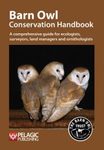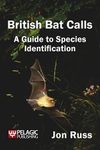About this book
Wind farms are an essential component of global renewable energy policy and the action to limit the effects of climate change. There is, however, considerable concern over the impacts of wind farms on wildlife, leading to a wide range of research and monitoring studies, a growing body of literature and several international conferences on the topic.
This unique multi-volume work provides a comprehensive overview of the interactions between wind farms and wildlife.
Volume 1 documents the current knowledge of the potential impacts upon wildlife during both construction and operation. An introductory chapter on the nature of wind farms and the impact assessment process is followed by a series of in-depth chapters documenting effects on climatic conditions, vegetation, terrestrial invertebrates, aquatic invertebrates and fish, reptiles and amphibians, birds, bats and terrestrial mammals. A synopsis of the known and potential effects of wind farms upon wildlife in perspective concludes Wildlife and Wind Farms - Conflicts and Solutions.
The authors have been carefully selected from across the globe from the large number of academics, consultants and practitioners now engaged in wind farm studies, for their influential contribution to the science. Edited by Martin Perrow and with contributions by 40 leading researchers including: Robert Barclay, Michael Dillon, Jan Olof Helldin, Hermann Hötker, Jeffrey Lovich, Manuela de Lucas and Eugene Takle. The authors represent a wide range of organisations and institutions including the Universities of Calgary, Iowa State, Lund & Wyoming, US Geological Survey, Michael-Otto-Institut im NABU, Norwegian Institute for Nature Research, Spanish Council for Scientific Research, Renewable Energy Systems and several leading consultancies.
Each chapter includes informative figures, tables, colour photographs and detailed case studies. Many of the latter are produced stand-alone from invited additional authors to ensure geographic spread and to showcase exciting new, often previously unpublished research.
Wildlife and Wind Farms - Conflicts and Solutions is designed for practitioners, researchers, managers and for a range of students in higher education, particularly those involved with environmental, ecological, conservation, impact assessment and climate change studies.
Contents
Preface
1. The nature of wind farms - Gero Vella
2. Climate - Eugene S. Takle
3. Vegetation - Margarida R. Silva and Isabel Passos
4. Terrestrial invertebrates - Sarah Elzay, Lusha Tronstad and Michael E. Dillon
5. Aquatic organisms - William O’Connor
6. Reptiles and amphibians - Jeffrey E. Lovich and Joshua R. Ennen
7. Birds: displacement - Hermann Hötker
8. Birds: collision - Manuela de Lucas and Martin R. Perrow
9. Bats - Robert M.R. Barclay, Erin F. Baerwald and Jens Rydell
10. Terrestrial mammals - Jan Olof Helldin, Anna Skarin, Wiebke Neumann, Mattias Olsson, Jens Jung, Jonas Kindberg, Niklas Lindberg and Fredrik Widemo
11. A synthesis of effects and impacts - Martin R. Perrow
Index
Customer Reviews
Biography
Martin Perrow is Founder and Director of ECON Ecological Consultancy Ltd and currently manages the ornithological requirements of several wind farm sites, assessing the likely impacts and providing advice in order to engineer the co-existence of birds and wind farms with minimal impacts. He has published widely on the subject.











































